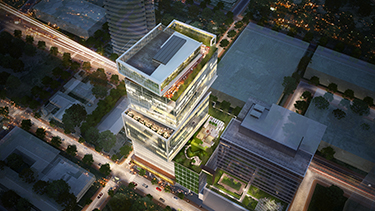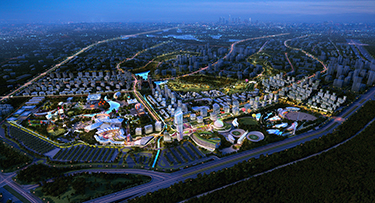|
Subscribe / Renew |
|
|
Contact Us |
|
| ► Subscribe to our Free Weekly Newsletter | |
| home | Welcome, sign in or click here to subscribe. | login |
Construction
| |
 |
March 29, 2018
To meet green goals, cities must grow more strategically
B+H Architects

Demers
|

Jago
|
Earlier this month, the United Nations Intergovernmental Panel on Climate Change released a disconcerting analysis at its Cities and Climate Change Science Conference: Cities actually emit 60 percent more carbon than city planners are accounting for.
Our current focus on renewable energy and mobility solutions cannot stem the tide because the escalating emissions are generated by per capita consumption of goods and services beyond building use and transportation. In other words, we are in trouble and our current approach won’t fix things.
The report finds that wealthy “consumer cities” like London, Paris, New York, Toronto and Sydney, despite substantial progress on today’s spreadsheets, in fact rank alongside pollution-generating “producer cities” in India, Pakistan and Bangladesh when their total per capita footprints are calculated.
This should not suggest that our steady progress in green building technology and energy efficiency or our investments in mass transit are a mere drop in the ocean.
Rather, the time has come to amplify our impact by taking a much more strategic approach to green — one that optimizes planning around people, nature and essential needs, not around prescriptive zoning and programming, function and its demands.
Meeting basic needs
The first primitive village was a response to meeting the most basic needs of people. It was founded by water, then grew to provide food and offer shelter.
These basic needs have not changed in millennia. Yet once the basic needs are met, the village provided the means not just to survive but to thrive. At the heart of the community, relationships were founded; information exchanged; goods made, bartered and sold; food shared; advice given and ideas born.
Data-driven design
Most major U.S. cities have evolved to optimize use of the automobile. As we now contemplate a future where the automobile is losing its primacy we are stuck with stranded assets, natural pathways bisected by giant highways and open spaces hostile to human activity.
Our current approaches tend to work within the confines of these arbitrary constraints without considering the bigger picture — continued economic and social growth over time, supported by a healthy environment and sustainable resource management. If this is the goal, and it’s the only goal that promises any kind of a future worth striving for, we have to shift the focus to optimizing planning and design solutions for humans. What do they need? What do they want? Where do they go to get it?
When we map these patterns a completely different set of solutions emerges that leverages points of intersection, identifies opportunities to share resources and ultimately optimizes the human experience. Creating self-sustaining ecosystems that can evolve and adapt over time.
When we begin with people and map their needs, wants and desires, clear adjacencies and efficiencies begin to emerge. Many opportunities lie in the application of biophilic principles (which regard nature as the embodiment of efficiency). Water, energy and even waste, when balanced with human enterprise needs, will lead us to amazing new scenarios and solutions.
In our own strategic consulting practice the application of basic principles, informed by quantitative and qualitative analysis and thoughtfully balanced, typically generates 45 to 50 percent efficiencies over traditional planning process. The results to not come from elaborate design solutions, but simply by getting the bits better organized.
When you layer in advanced technology applications like artificial intelligence and smart systems, the results can double or triple the return. Given that all our economic activity is based on the consumption of natural resources, balancing our inputs and outputs within the context of the whole ecosystem is the only way to guarantee sustained economic and social prosperity in a healthy environment. Dust off your TQM and Six Sigma tools and processes and you’ll be reminded how this thoughtful and holistic systems approach is just logical.
According to research by Dell Technologies, 85 percent of the jobs that will exist in 2030 haven’t even been invented yet. Far from being pessimistic, this report sees a future where work chases people rather than the other way around, with companies setting out tasks to be completed then harnessing technology to match the task to the best qualified person, anywhere in the world. The greatest fear in this scenario, according to the analysis, is social disruption.
The U.S. is littered with cities and towns that grew up around an industry base that has subsequently faded and died. The success stories rise again from the ashes by taking an inventory of what they have and rebuilding community around the bright spots, like Pittsburgh’s transformation from forgotten steel city to tech hub leading the world in robotics. The opportunity we have is to accept that we cannot foretell the future, but to plan strategically in the knowledge that the needs, wants and desires that fulfill people have not changed in millennia.
New opportunities
New and exciting solutions are quickly becoming reality — think of GIS, GPS, AI, autonomous cars or energy transfer. Advanced technologies, datasets and experience all afford a unique opportunity for urban planners and architects to significantly reduce the human environmental footprint by mapping and integrating human needs.
Throughout history — from da Vinci to Frank Lloyd Wright, Le Corbusier to Paolo Soleri — new town and urban planning visions have emerged, but each was weighted by a limited perspective attached to a time, technology or social evolution.
For example, Wright’s Broadacre City presupposed that cars would still be at the center of our approach, while others were too focused on technology or machine centric environments. Perhaps only Soleri and his unique social architecture showcased in the Arizona desert at Arcosanti addressed the social evolution — the sharing economy that is being readily embraced by millennials and generations behind them.
But none of these noted thinkers had the advantage of integrating and optimizing the built environment as we have today. This is an exciting horizon where we can truly make 1 + 1 = 4 or more, balance the human footprint, regenerating and empowering the environment to continue to support life on earth.
Doug Demers is co-founder and managing principal of B+H Architects, a strategic consulting practice. Jill Jago is communications director and senior strategist at B+H Architects.
Other Stories:
- Let’s make buildings people can still use after a disaster
- New green rating systems go way beyond LEED
- How cleaner indoor air makes for healthy workers and a healthier bottom line
- Cheap solar energy won't end the need for deep-green buildings
- Asphalt: the go-to material for green paving projects
- Climate change is making resilience a more urgent design priority
- We designed our own net-zero office — and you can, too
- SPU remodel shows even industrial buildings can be green
- Why we can’t reach our emissions goals without tracking embodied carbon




